Sign in
How Much Ice Do You Need? Sizing a Hoshizaki Machine for Your Business
November 26, 2025
18
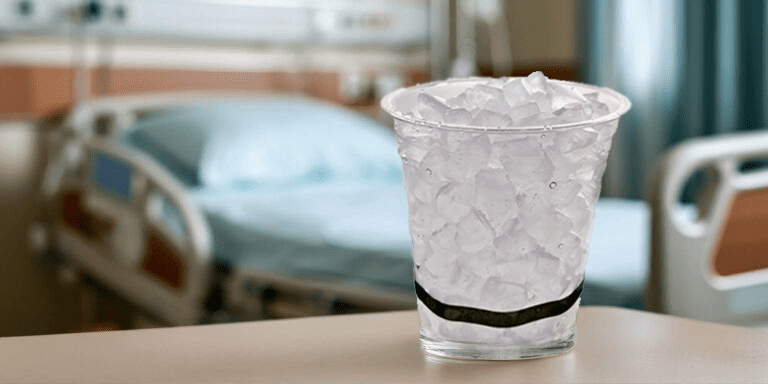
How Much Ice Do You Need? Sizing a Hoshizaki Machine for Your Business
Introduction
Understanding how much ice your business truly needs is essential when selecting the best Hoshizaki machine for a restaurant, bar, hotel, healthcare facility, or production environment. Choosing the right commercial ice machine affects service reliability, customer experience, and long-term operating cost. This guide explains how to accurately size a Hoshizaki ice maker, accounting for real-world demand, ice type selection, and practical installation factors.
Who It's For
This article is for operators who need a clear, numbers-based approach to ice production planning. Whether you're opening a new location or replacing an older unit, proper sizing protects your service-life economics, improves lifetime value, and avoids overspending on capacity you won’t use.
If you're comparing models, our Hoshizaki KM Edge and specialty ice categories—such as flakers and cubelet machines—are good starting points.
Key Considerations
Daily Usage Pattern
Estimate your peak usage windows. Bars and quick-serve locations often see heavy spikes, while healthcare facilities rely on a consistent all-day demand. A machine sized only for average usage will fall behind during peak periods.
Ice Type Requirements
Each industry uses ice differently. Bars prefer crescent or square cubes for slow melt; seafood displays rely on flake ice; nursing stations lean toward cubelet ice for chewability. Ice type affects the total production required because melt rates vary.
Future Expansion
Growth plan. If your business is likely to add seats, expand bar service, or increase drive-thru volume, add a 10–20% buffer. This supports a stronger lifetime value by avoiding premature upgrades.
Operating Cost Analysis
The most affordable unit upfront isn’t always the best in the long term. Consider energy efficiency, water consumption, and required maintenance schedules. Hoshizaki’s reputation for reliability often lowers total operating cost over the machine’s full lifespan.
Model / Ice-Type Fit
Matching model families to the right task ensures peak performance and reduces unnecessary costs. For example, the KM series produces crescent ice, ideal for restaurants and beverage programs because it displaces more liquid without splashing. Square-cube models from this category excel in high-end cocktails where clarity and slow melt matter.
Flake and cubelet models perform exceptionally well in healthcare, grocery, and cold-prep applications thanks to their high surface area and easy handling. Review your menu and service workflows carefully—ice type directly affects production sizing and service life economics.
Sizing Math
Step 1: Calculate Daily Ice Use
Most operations fall into predictable ranges:
• Full-service restaurant: 1.5–2 lbs of ice per guest
• Bar program: 3 lbs per seat
• Fast casual: 0.8–1.5 lbs per drink transaction
• Healthcare patient service: 5–10 lbs per bed
Multiply these by your estimated daily volume to form your baseline need. For precision, you can use the online ice machine size calculator.
Step 2: Add Peak Demand Capacity
Ice machines don’t produce ice instantly—production is spread over 24 hours. Add at least 20–30% additional capacity for periods where usage outpaces production.
Step 3: Match to Production Ratings
Compare your total demand to the machine’s AHRI-rated production. Ratings assume optimal environmental conditions (70°F air temperature / 50°F water temperature). If your install location runs hotter, size up to ensure consistent performance.
Example
A 100-seat restaurant may require around 150–200 lbs per peak service session, plus backup reserve. Over 24 hours, this typically means selecting a 400–500 lb/day Hoshizaki ice maker to cover both daily usage and rush periods.
Install Notes
Ventilation & Clearance
Commercial ice machines must breathe. Undercounter models need unobstructed airflow; stackable units require proper spacing and exhaust direction. If your layout is tight, review options through the installation guide.
Water Quality
Poor water quality reduces ice clarity, shortens service life, and increases maintenance costs. Use a filtration system recommended for Hoshizaki machines to protect evaporators and maintain capacity.
Drainage & Electrical
Plan for gravity or pump-assisted drainage, and confirm your voltage and amperage. Many locations overlook the drain slope, which can cause backflow or slow meltwater removal.
Maintenance
Routine preventive service keeps production consistent and protects long-term operating cost analysis. Hoshizaki machines are known for long service life, but only if descaling, sanitizing, and filter changes are performed regularly. For ongoing support or warranty-preserving maintenance, see our service page.
Monitoring production over time can also help detect efficiency losses before they impact busy hours.
Get a fast quote and delivery date—start with our ice machines or message us via our contact page.
How Much Ice Do You Need? Sizing a Hoshizaki Machine for Your Business
Intro
Understanding how much ice your business truly needs is essential when selecting the best Hoshizaki machine for a restaurant, bar, hotel, healthcare facility, or production environment. Choosing the right commercial ice machine affects service reliability, customer experience, and long-term operating cost. This guide explains how to accurately size a Hoshizaki ice maker, accounting for real-world demand, ice type selection, and practical installation factors.
Who It's For
This article is for operators who need a clear, numbers-based approach to ice production planning. Whether you're opening a new location or replacing an older unit, proper sizing protects your service-life economics, improves lifetime value, and avoids overspending on capacity you won’t use.
If you're comparing models, our Hoshizaki KM Edge and specialty ice categories—such as flakers and cubelet machines—are good starting points.
Key Considerations
Daily Usage Pattern
Estimate your peak usage windows. Bars and quick-serve locations often see heavy spikes, while healthcare facilities rely on a consistent all-day demand. A machine sized only for average usage will fall behind during peak periods.
Ice Type Requirements
Each industry uses ice differently. Bars prefer crescent or square cubes for slow melt; seafood displays rely on flake ice; nursing stations lean toward cubelet ice for chewability. Ice type affects the total production required because melt rates vary.
Future Expansion
Growth plan. If your business is likely to add seats, expand bar service, or increase drive-thru volume, add a 10–20% buffer. This supports a stronger lifetime value by avoiding premature upgrades.
Operating Cost Analysis
The most affordable unit upfront isn’t always the best in the long term. Consider energy efficiency, water consumption, and required maintenance schedules. Hoshizaki’s reputation for reliability often lowers total operating cost over the machine’s full lifespan.
Model/Ice-Type Fit
Matching model families to the right task ensures peak performance and reduces unnecessary costs. For example, the KM series produces crescent ice, ideal for restaurants and beverage programs because it displaces more liquid without splashing. Square-cube models from this category excel in high-end cocktails where clarity and slow melt matter.
Flake and cubelet models perform exceptionally well in healthcare, grocery, and cold-prep applications thanks to their high surface area and easy handling. Review your menu and service workflows carefully—ice type directly affects production sizing and service life economics.
Sizing Math
Step 1: Calculate Daily Ice Use
Most operations fall into predictable ranges:
- Full-service restaurant: 1.5–2 lbs of ice per guest
- Bar program: 3 lbs per seat
- Fast casual: 0.8–1.5 lbs per drink transaction
- Healthcare patient service: 5–10 lbs per bed
Multiply these by your estimated daily volume to form your baseline need. For precision, you can use the online ice machine size calculator.
Step 2: Add Peak Demand Capacity
Ice machines don’t produce ice instantly—production is spread over 24 hours. Add at least 20–30% additional capacity for periods where usage outpaces production.
Step 3: Match to Production Ratings
Compare your total demand to the machine’s AHRI-rated production. Ratings assume optimal environmental conditions (70°F air temperature / 50°F water temperature). If your install location runs hotter, size up to ensure consistent performance.
Example
A 100-seat restaurant may require around 150–200 lbs per peak service session, plus backup reserve. Over 24 hours, this typically means selecting a 400–500 lb/day Hoshizaki ice maker to cover both daily usage and rush periods.
Install Notes
Ventilation & Clearance
Commercial ice machines must breathe. Undercounter models need unobstructed airflow; stackable units require proper spacing and exhaust direction. If your layout is tight, review options through the installation guide.
Water Quality
Poor water quality reduces ice clarity, shortens service life, and increases maintenance costs. Use a filtration system recommended for Hoshizaki machines to protect evaporators and maintain capacity.
Drainage & Electrical
Plan for gravity or pump-assisted drainage, and confirm your voltage and amperage. Many locations overlook the drain slope, which can cause backflow or slow meltwater removal.
Maintenance
Routine preventive service keeps production consistent and protects long-term operating cost analysis. Hoshizaki machines are known for long service life, but only if descaling, sanitizing, and filter changes are performed regularly. For ongoing support or warranty-preserving maintenance, see our service page.
Monitoring production over time can also help detect efficiency losses before they impact busy hours.
Get a fast quote and delivery date — start at our ice machines or contact us.


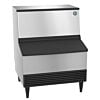

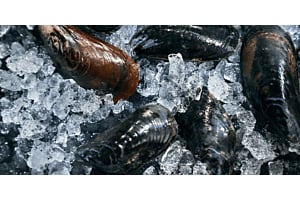
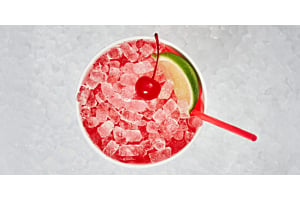

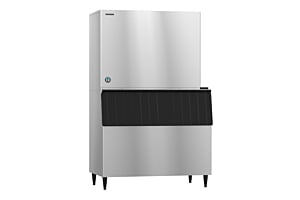

Login and Registration Form